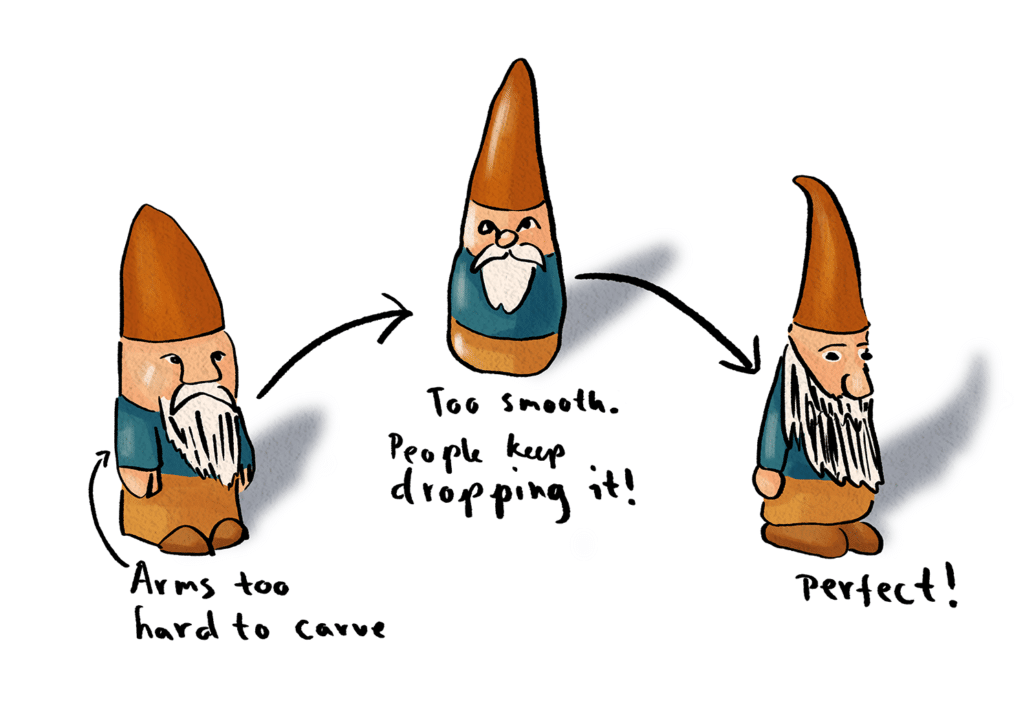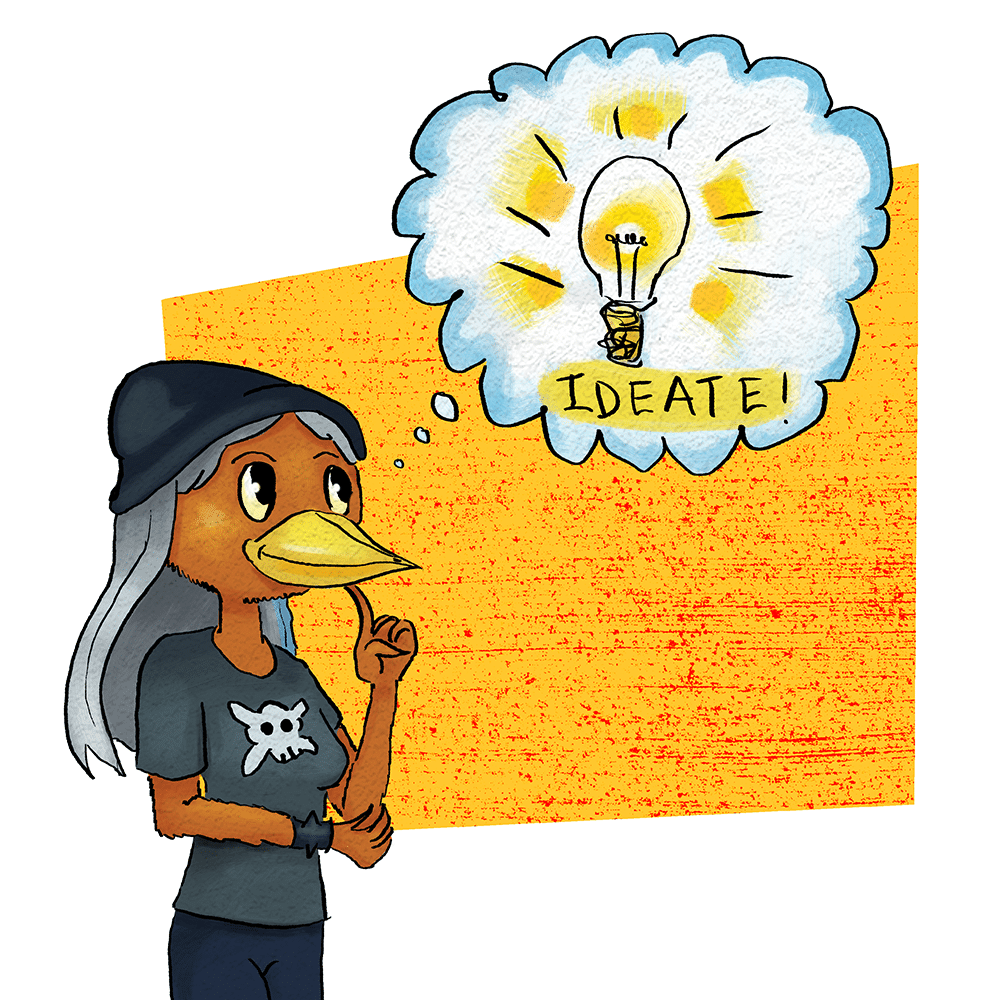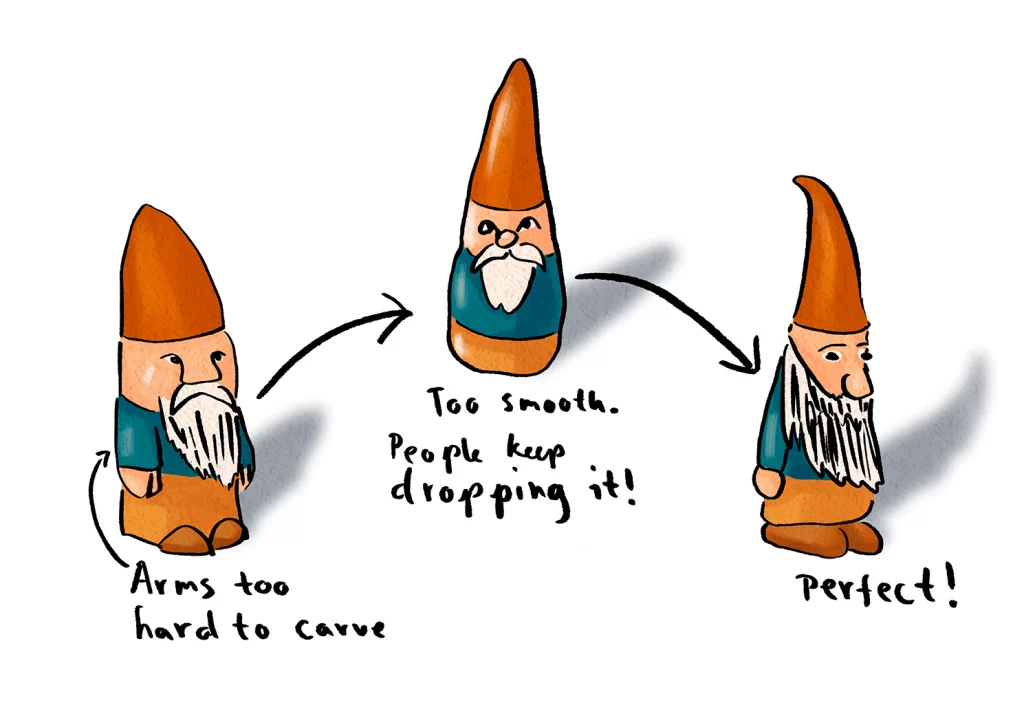
You’ve thought of an idea for a new product. You’ve come up with several designs. You’ve prototyped and tested your top few ideas. Now what?
Iterating
Yes, the “last” step is iterating. (You’ll know why “last” is in quotes by the end of this article!)
If you’ve been following along, you know that Rhonda’s product idea is a Secret Beer Mug. (If you haven’t? You might want to read the First, Second, and Third articles in this series first and then come back to this one.)
Anyway, Rhonda had a few ideas:
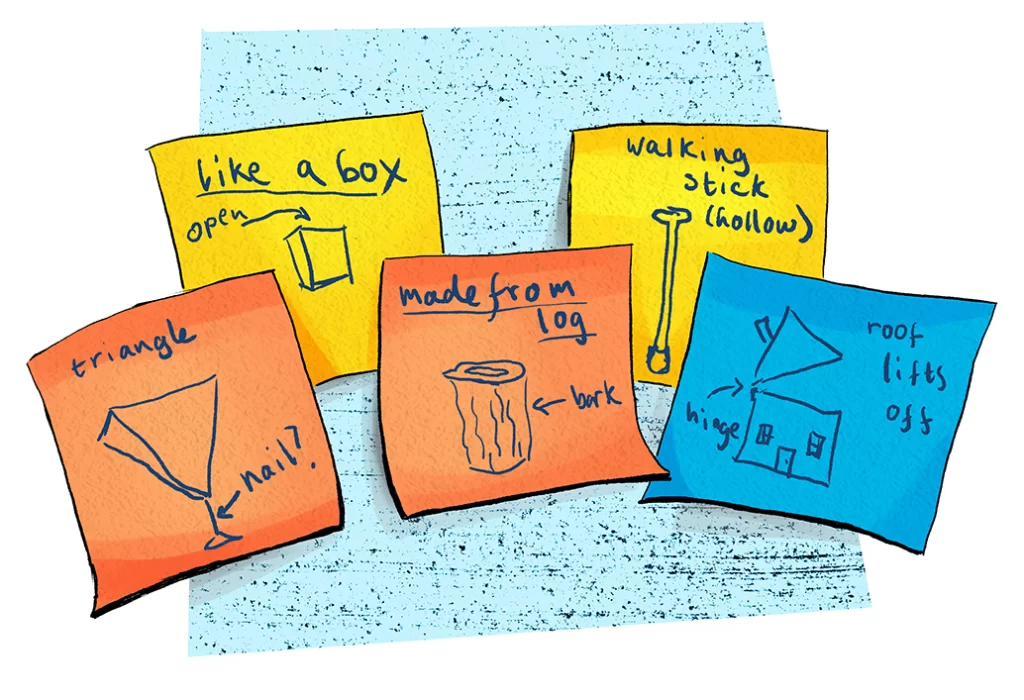
And she tested her top two, the House-shaped mug and the Garden Gnome-shaped mug, for ease of making and for water-tightness. She found that the Gnome was pretty difficult to make and required renting time on a special tool, but that it outperformed the House on the water-tightness test.
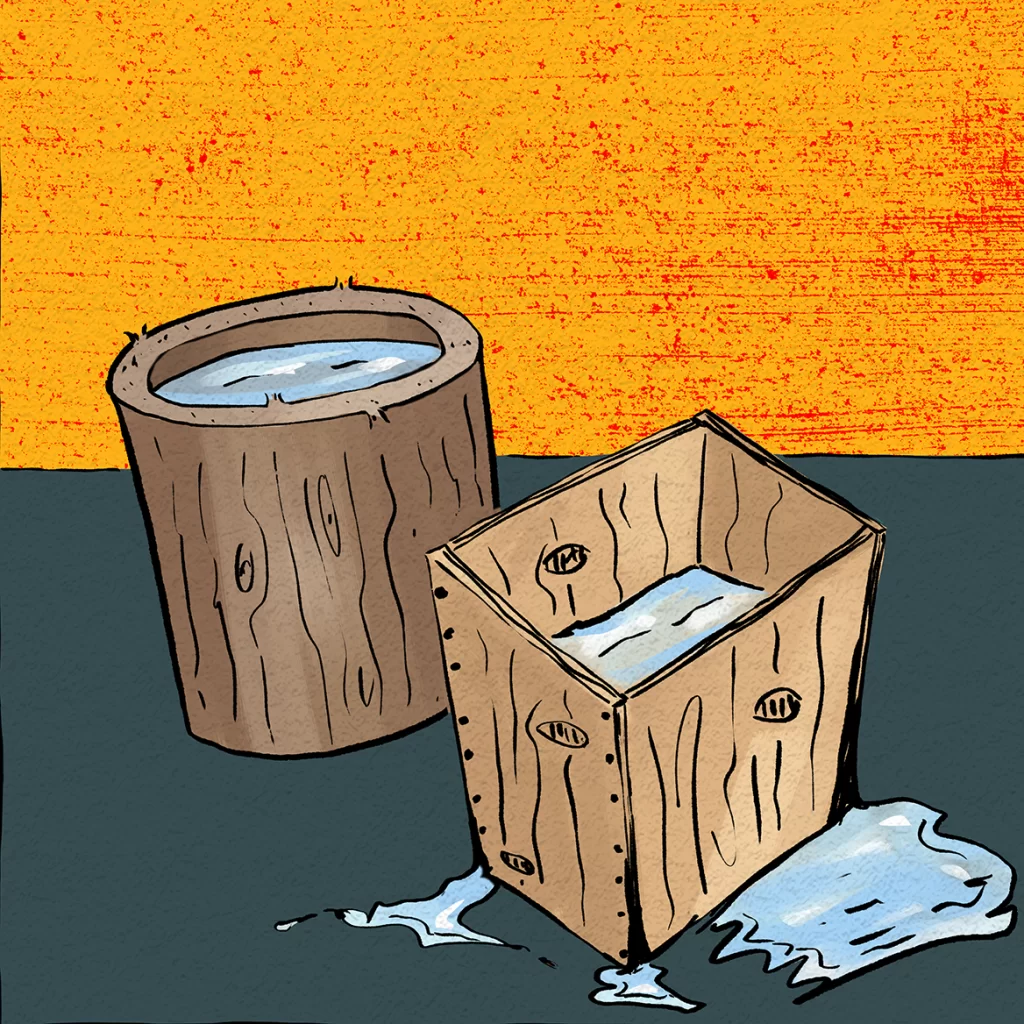
But what about Iterating?
Ok, Ok, I just wanted to make sure everyone had the background of the story. So now Rhonda will Iterate on her designs.

Now there are several directions you could go with this. You might simply decide to choose one prototype over the other, and work to continue improving it. But more likely, you’ll want to incorporate some elements of each design that you tried. And you may even want to continue working down 2 or 3 paths for now.
For example, Rhonda decides to make some versions of the House Mug that will be more watertight.
- One is carved from a solid block of wood, like the Gnome prototype, using the CNC carving tool at the Maker Space.
- One is assembled from separate pieces of wood, but uses a more sophisticated joining technique and incorporates a food-safe chemical sealant.
She also makes a version of the gnome that is a little simpler and more inside her skill set with the carving tool. And then it’s time for…
Testing (again.)
Yes, you’ve guessed correctly as to why I said iterating was the “last” step earlier in this article. It is the last step if you simply list them out on paper, but in reality you’re probably going to loop several or many times through iterating and testing to find a design you’re really happy with.
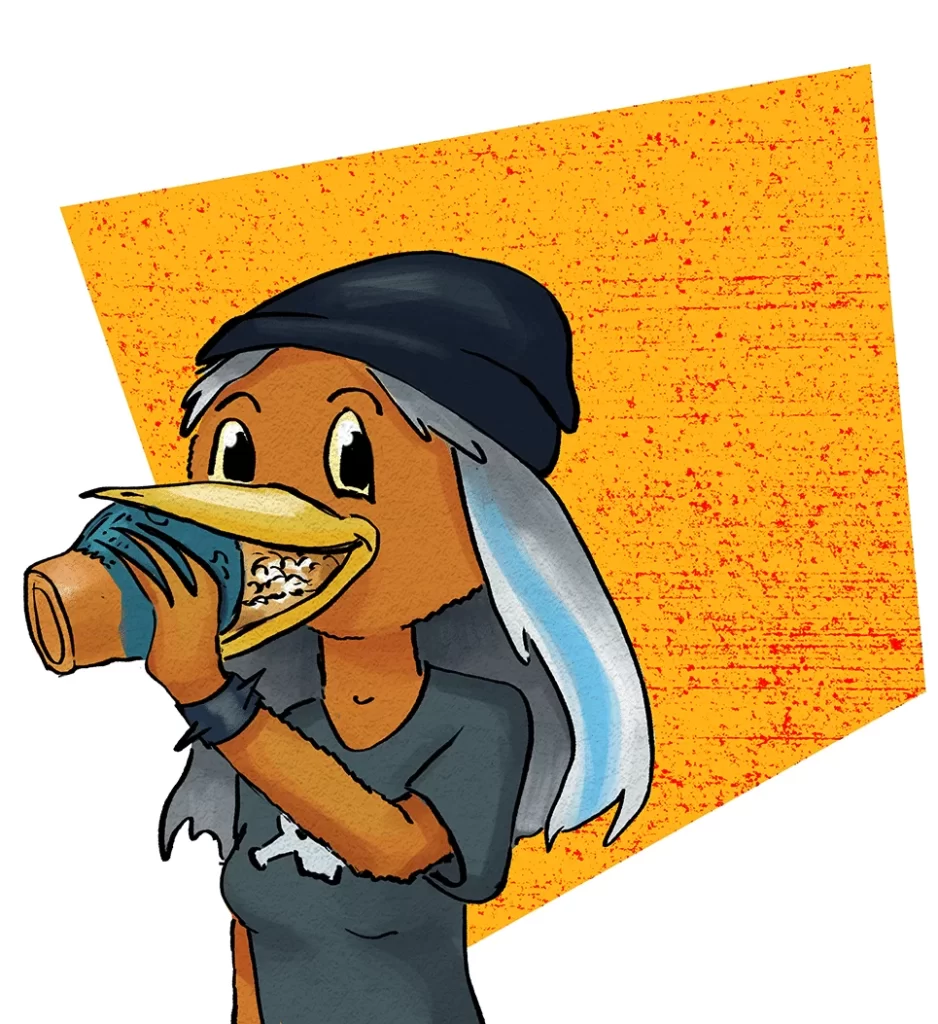
And that’s it! That’s the end of the Design Thinking Process! Now of course there are many more details and opinions and tools for each step of the process. (It’s even offered as a graduate-level education program that takes years to complete.) But you can consider yourself “an expert on the basics.
Weekly Challenge:
If you haven’t yet, try the Design Thinking Process in your business – and don’t forget to iterate on your ideas!
